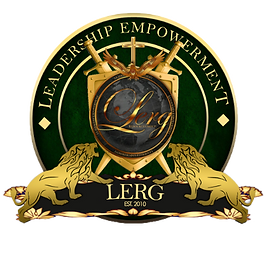
select a language. selecciona un idioma

Business Law
Organization and Management of starting a business is critical in avoiding break points as a volume of products and services increase. LERG Signature Coaching and LERG Exclusive Membership services may assist you in your business development.
When thinking about the value of a company, people tend to think about physical goods, supply chains, and distribution networks, or how much software that company will sell in a year. While those may be the mechanisms through which the value is delivered, often the real value lies in the underlying Intellectual Property.
In fact, Intellectual Property (IP) is often a company’s most valuable asset.
Protectable Intellectual Property generally encompasses “creations of the mind,” like names, slogans, inventions, or works of art.
At its core, Intellectual Property allows creators (or owners of the IP) to benefit from their work. By giving legal protection to new creations, the government encourages further innovation by giving the owner of the work the exclusive right to profit from that work.
There are three basic types of Intellectual
Property: trademarks, patents, and copyrights. Each protects a different type of creation.
Over the next couple weeks, we’ll take an in-depth look at each facet of IP protection. (Next week we’ll look at trademarks, and the week after that we’ll look at patents and copyrights. We’ll end the month with a case study.) But for now, here’s an overview of each of the different forms of IP and what they protect:
Trademark
-
protects a word, name, phrase, design, sound, or smell, or any combination of the six, that is used to identify source of goods and/or services
-
think NIKE®, MCDONALD’S®, or the APPLE LOGO
Patent
-
protects inventions and designs
-
examples include engines, solar panels, and computer chips
Copyright
-
protects original artistic and literary works
-
examples include songs, movies, books, sculptures, and ad jingles
There is a fourth type of Intellectual Property that doesn’t receive explicit protection in the form of a government filing, but it can also be protected if certain criteria are met. These are known as trade secrets.
Trade Secret
-
protects from misappropriation or stealing of confidential (not publicly available) information
-
includes customer lists, architectural plans and designs, and things like the COCA-COLA® secret recipe
Often, the different types of IP can be used together to protect a single product.
Let’s say you invented a completely new vacuum cleaner that combines the automation of the ROOMBA® vacuum with the power of a standing HOOVER® vacuum, for a completely superior cleaning experience. You could use the four forms of Intellectual Property listed above in conjunction with each other to protect each aspect of your product.
-
You’d use a patent to protect the invention itself: the actual hardware that makes your product different from anything that’s been invented before. This is what allows you to combine your product’s power with ease-of-use.
-
You’d use trademarks to protect the name of the vacuum and the brand you create around it. That would include your logo, your slogan (“It really sucks!”), and the design of your advertising materials. This lets your customers know that what they’re buying is your top-of-the-line cleaner, not some other inferior product.
-
You’d use a copyright to protect the jingle you use in your TV commercial and radio ads, or your brochures or website. This would ensure that no other company tried to trick customers into buying their cleaner by using a similar commercial.
-
Finally, you might protect your customer list as a trade secret. If you had a unique customer list and kept this information out of the public eye, it could become a trade secret, helping you sustain an even greater advantage over the competition. You might even want to protect certain new, hidden features of how your product works by trade secret instead of patent under certain circumstances.
As a practical matter, it may be difficult to protect everything that you consider your Intellectual Property, and companies usually have to prioritize which pieces of IP they choose to “formally” protect.
This is especially true for startups and small businesses. When you’re first starting out, you may not have the financial resources to file for protection for all of your IP, especially if you seek the help of a lawyer for each of your filings. But that doesn’t mean that you can’t take steps to safeguard your IP rights until you’re ready to formally file.


$199.00
per month
-
Access LERG Signature Group
-
Receive up to four (4) coaching 1:1 hours $199 per month minimum 1 hour per week
-
A maximum of one (1) hour 1:1 coaching meeting per week
$49.99
per month
-
Join LERG Signature Group
-
Select a book of your choice from Dr. Fredrick Acklin Book Collection
-
Memberships sustained for six months receive a branded LERG T-Shirt
-
Receive 10% off on selected services
-
Discounted access to LERG Master Classes


